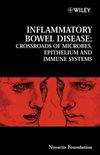Chronic obstructive pulmonary disease: an overview of pathology and pathogenesis.
引用次数: 43
Abstract
A cigarette smoke-induced inflammatory process underlies the pathogenesis of the majority of pathologic lesions associated with chronic obstructive pulmonary disease (COPD). In chronic bronchitis, this process is located in the mucosa, gland ducts and glands of intermediate sized bronchi with an internal diameter of 2-4 mm. The mucus-containing exudate produced by the inflammatory response overpowers the normal clearance mechanisms, resulting in the cough and expectoration that characterize chronic bronchitis. In some cases of chronic bronchitis, the inflammatory process extends to smaller bronchi and bronchioles less than 2 mm in internal diameter. In this location, the inflammatory process thickens the wall, narrows the lumen and destroys the parenchymal support of the airways. These changes progressively increase peripheral airways resistance and eventually reduce the patient's ability to empty their lungs to a degree that can be measured by a reduction in FEV1 (forced expiratory volume in one second). The reduction in lung surface area produced by parenchymal inflammation contributes to the decline in FEV1 by reducing lung elastic recoil, which is the major force driving air out of the lung. It also contributes to the reduction in diffusing capacity by reducing the lung capillary bed. The purpose of this presentation is to review the quantitative aspects of these pathological changes and attempt to provide insight into factors which result in progression of these lesions.慢性阻塞性肺疾病:病理和发病机制概述。
香烟引起的炎症过程是与慢性阻塞性肺疾病(COPD)相关的大多数病理病变的发病机制的基础。在慢性支气管炎中,该过程位于内径2-4 mm的中等大小支气管的粘膜、腺体导管和腺体。炎症反应产生的含黏液渗出物压倒了正常的清除机制,导致慢性支气管炎特征的咳嗽和咳痰。在一些慢性支气管炎病例中,炎症过程扩展到内径小于2mm的较小的支气管和细支气管。在这个部位,炎症过程使管壁增厚,管腔变窄,破坏气道的实质支持。这些变化逐渐增加周围气道阻力,并最终降低患者排空肺部的能力,其程度可以通过FEV1(一秒钟用力呼气量)的降低来衡量。实质炎症引起的肺表面积减少,通过减少肺弹性后坐力,导致FEV1下降,而弹性后坐力是推动空气排出肺部的主要力量。它还通过减少肺毛细血管床而减少弥散能力。本报告的目的是回顾这些病理变化的定量方面,并试图提供深入了解导致这些病变进展的因素。
本文章由计算机程序翻译,如有差异,请以英文原文为准。
求助全文
约1分钟内获得全文
求助全文

 求助内容:
求助内容: 应助结果提醒方式:
应助结果提醒方式:


